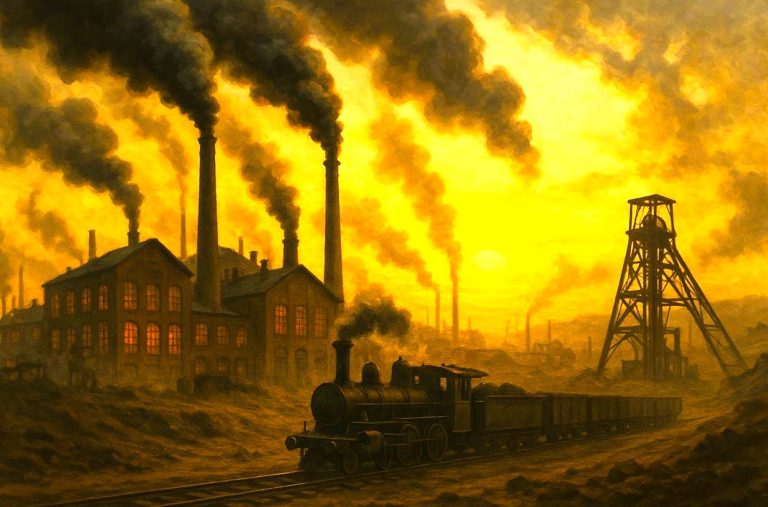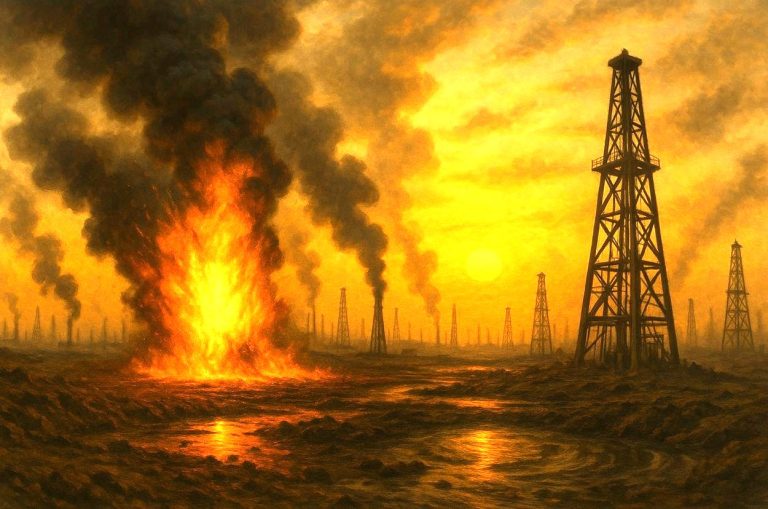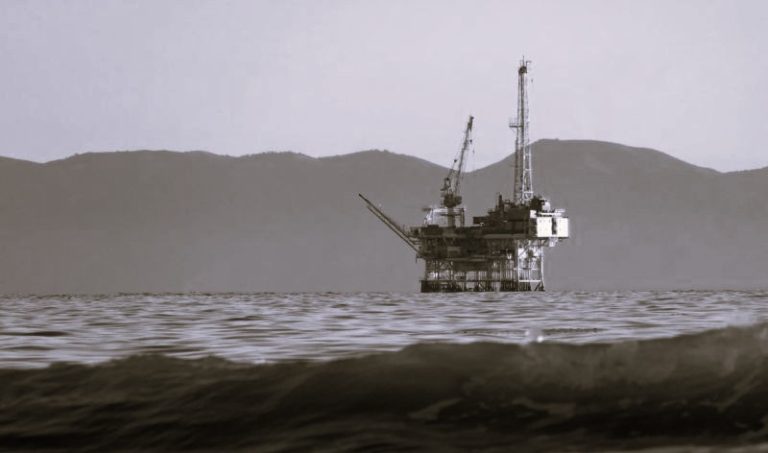

The real question is not whether some species can survive climate change. It is whether we, as a global community, are willing to change fast enough to allow them the space to do so.

By Matthew A. McIntosh
Public Historian
Brewminate
A Slow Erosion of Biodiversity
The creeping pace of extinction rarely registers in a headline. It lacks the drama of wildfire or flood. Species disappear not with a bang, but with the quiet fade of absence, no longer seen, no longer heard. Yet by the most conservative estimates, over one million species face extinction within the next few decades, many of them directly due to climate change. Among these, thousands of animal species, from insects and amphibians to mammals and birds, are already showing signs of population collapse.
This crisis does not unfold in isolation. It is intimately tied to habitat destruction, deforestation, pollution, and overexploitation. Climate change, however, acts as an accelerant. It pushes fragile ecosystems past their thresholds and turns marginal stress into irreversible damage.
Recent studies published in Proceedings of the National Academy of Sciences and Nature Climate Change show that nearly half of all known animal species have shifted their ranges in response to changing temperatures. For some, this means moving upslope or poleward. For others, particularly those with small ranges or specialized habitats, there is simply nowhere left to go.
Amphibians, Reptiles, and the Crisis of Moisture
In the cloud forests of Central America, the golden toad once flourished in a narrow ecological niche, reliant on consistent mist and moisture. It has not been seen since 1989. Scientists now believe it was among the first confirmed species driven extinct by anthropogenic climate change. The culprit was not a single event but the cumulative stress of altered rainfall patterns, disease, and habitat shrinkage, each exacerbated by rising global temperatures.
Amphibians in particular are sensitive to environmental changes due to their permeable skin and dual dependence on aquatic and terrestrial habitats. As temperature and precipitation patterns become erratic, breeding seasons are thrown out of sync. Tadpoles develop too fast or too slow. In some cases, the ponds themselves evaporate before metamorphosis can finish. For species that time reproduction with rainfall, climate disruption becomes a biological dead end.
Reptiles, often associated with arid resilience, are not immune. Sea turtles provide a striking example. Their sex is determined by temperature during incubation. As sand temperatures rise, hatchlings are overwhelmingly born female, threatening long-term population stability. In parts of the Great Barrier Reef, the ratio of female to male green turtles has reached 116 to 1.
Vanishing Corridors and Shifting Climates

Animals do not need passports, but they do need pathways. Migration is a survival strategy honed over millennia, yet climate change is redrawing the maps. In the Arctic, caribou herds once synchronized calving with the bloom of tundra plants. Warming now causes early plant growth, leaving calves undernourished when they need it most. Across the African Sahel, elephants travel traditional routes in search of water that no longer exists.
Species that can adapt quickly, such as some birds and insects, are shifting their ranges at rates of over 10 miles per decade. Others lag behind, constrained by geography, competition, or the absence of food. Mountain species find their habitable zones shrinking as they move upslope. At a certain altitude, the mountain ends. There is no higher ground.
Fragmented habitats compound the problem. Roads, farms, and cities carve landscapes into disjointed patches, blocking escape routes and isolating populations. What climate change begins, human development finishes. The result is not only species loss, but genetic erosion, small populations become inbred and vulnerable to disease.
Insects: The Quiet Collapse
Insects do not inspire the same affection as pandas or polar bears, but their decline may be the most ominous. They pollinate crops, recycle nutrients, and form the base of countless food webs. Recent studies across Europe and North America report insect biomass declines of up to 75 percent in protected areas over just a few decades. While pesticides and land use changes play major roles, temperature fluctuations and seasonal shifts are now being recognized as co-conspirators.
Butterflies, once indicators of ecological health, have become bellwethers of loss. The Bay Checkerspot in California, for example, survives in a fragile mosaic of serpentine grasslands. Warmer winters trigger early plant germination, causing larval host plants to die off before caterpillars emerge. The result is a mismatch that repeats annually, slowly starving the population into extinction.
Elsewhere, bumblebees are losing their southern ranges but failing to expand northward fast enough to keep up with the shifting climate. Unlike honeybees, they are poorly equipped to survive extreme heat. Their decline threatens pollination across wild and cultivated landscapes alike.
The Myth of Adaptability

One of the most persistent myths surrounding biodiversity is that nature will simply “adapt.” Evolution, after all, is nature’s toolkit. Yet adaptation is not instantaneous. It occurs over generations, not years, and only when viable mutations align with survivable conditions. Climate change is unfolding faster than the evolutionary clock can tick.
Coral reefs, often portrayed as resilient ecosystems, are rapidly bleaching under thermal stress. Coral polyps eject their symbiotic algae when temperatures rise even a few degrees beyond normal. Without these algae, the corals starve. Already, 50 percent of the Great Barrier Reef’s shallow corals have died since 2016. Some reefs may recover, but many will not, especially if warming continues as projected.
Similarly, alpine mammals like the American pika are showing early signs of population decline as temperatures in their rocky habitats exceed their physiological limits. They cannot survive prolonged heat and cannot migrate further upslope. In many cases, there is no adaptation available, only decline.
What Extinction Really Means
The language of extinction is often sterile. It quantifies loss in numbers, species counts, percentages. But extinction is not an abstraction. It is the final chapter of a lineage that evolved over millions of years. It is the silence where a songbird used to be, the empty coral where a reef once danced with color. It is the unraveling of relationships, predator and prey, pollinator and plant, parent and offspring.
For Indigenous communities, extinction also means cultural loss. Many traditional practices and identities are tied to local animal species: salmon in the Pacific Northwest, caribou among the Sámi, pangolins in West Africa. As these species decline, so too does a way of life passed down through generations.
In the end, the crisis is not just ecological. It is existential. As the world empties of animals, we lose not only biodiversity, but a sense of kinship with the living world. The disappearance of one species reshapes the future of others, including ourselves.
Hope in the Cracks
Despite the bleak trajectory, there are glimmers of resistance. Protected corridors, climate-resilient conservation strategies, and local ecological restoration efforts have shown promise. In Costa Rica, reforestation has allowed howler monkeys and jaguars to return to areas once cleared for cattle. In parts of Australia, the use of Indigenous fire management techniques is helping preserve biodiversity by maintaining patchy landscapes that support a wide range of species.
Still, such victories remain the exception. Without a global reduction in greenhouse gas emissions, even the most carefully managed conservation plans risk becoming triage. Animals can only survive so much adaptation before it turns into exhaustion.
The real question is not whether some species can survive climate change. It is whether we, as a global community, are willing to change fast enough to allow them the space to do so. What remains to be seen is whether our awareness can outpace our apathy.
And whether we will notice when the last voice goes silent.
Originally published by Brewminate, 08.04.2025, under the terms of a Creative Commons Attribution-NonCommercial-NoDerivatives 4.0 International license.


